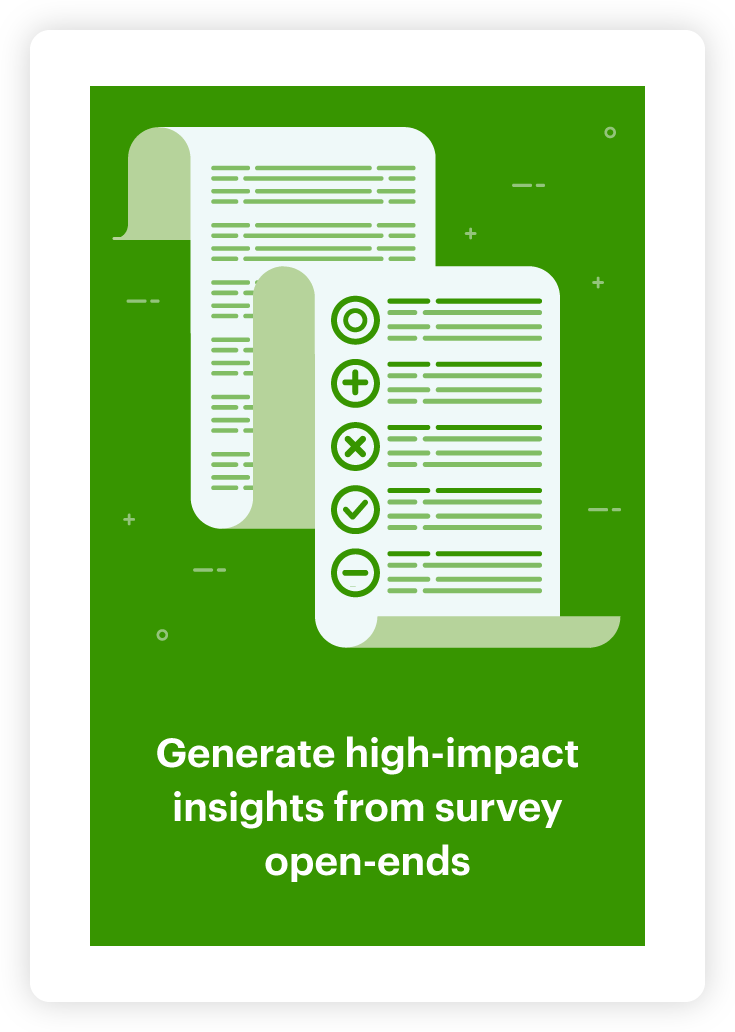How to stop manually coding survey responses

If you’ve ever conducted a customer feedback survey, you’re probably sitting on a goldmine of unused customer insights. It’s time to start coding survey responses.
Harvesting value from that mass of unstructured qualitative data can be daunting. Quantitative analysis is simple, but how do you begin to approach qualitative research? Let’s talk about it.
Manual survey coding
Coding survey responses can be approached from two different angles. One approach is manual coding, where open ended survey responses are sifted through by hand. Each individual response is read and categorized into a set of determined codes or themes.
This can be time consuming and the insights are often shaped by a predetermined hypothesis. For instance, if you’re only looking for comments relating to customer service, you might overlook trends relating to other areas of interest.
Automated survey coding
Efficient
The second approach to coding survey responses is automated coding using a text analysis software. This strategy streamlines the analysis process and minimizes the potential for human error or biased analysis. AI-powered Natural Language Processing tools sift through survey responses for you in a fraction of the time.
Exploratory
If saving time and resources isn’t convincing enough, automated survey analysis also leaves room for what we call the ‘unknown unknowns.’ These are the unexpected insights and trends found within your language data that you might overlook during manual analysis. You don’t need to designate codes in advance or train the algorithm. Text analytics softwares do it all for you.
Contextual understanding
That being said, even automated analysis requires human input. A software can tell you what words or phrases are important or commonly used among your respondents – but it takes a human to understand what that means and how it can be applied to future business practices.
Humans also understand the importance of context while coding survey responses. For example, you might see that references to customer service issues spike after new CX practices were put in place. This tells you that customers are not happy with the changes. A software can’t always tell you why a word or topic is over indexing among survey respondents, but contextual understanding can.
Coding survey responses with Relative Insight
Relative Insight knows the importance of context when conducting survey analysis. Without an understanding of larger events, ideas, trends or industry conditions, it’s impossible to fully grasp the importance of an insight. Competitor benchmarking and time-based analysis highlight the importance of contextual understanding.
For example, you might be content discovering your customers use the word good to describe your brand. But if you stopped there, you wouldn’t know that your competitors are described as amazing and the best. See how the use of a reference point enhances the value of analysis? That’s what Relative Insight does.
Our software analyzes text data through the lens of comparison. By comparing one textual data set to a baseline or reference point, we can understand the differences and similarities in opinions and how people speak. These differences can uncover the gaps – gaps between competitors, gaps in perception, gaps across demographics, gaps over time and more.
Comparative analysis paints a detailed picture and leads to logical next steps. Relative Insight streamlines the survey coding process and allows you to analyze qualitative data at any scale.
